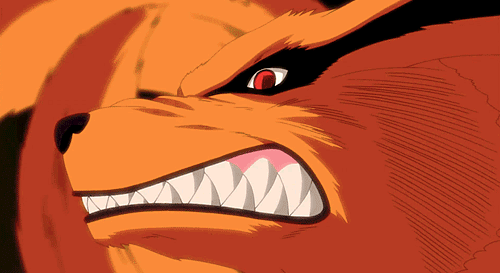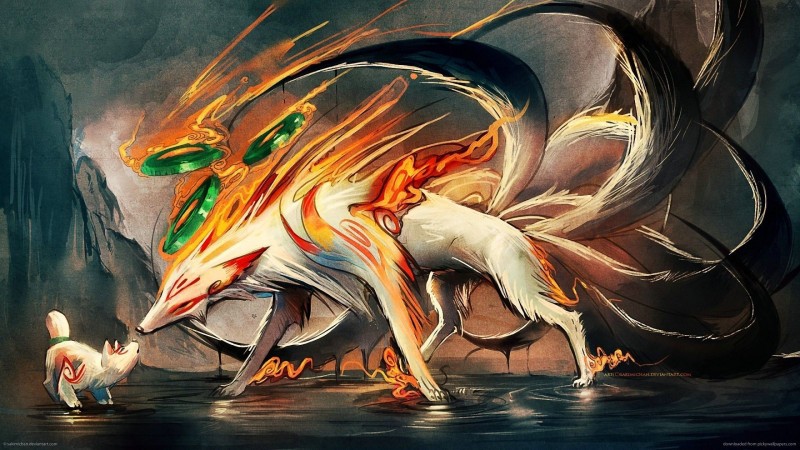I am pretty sure you noticed that the name of this anime blog is 9-tailed kitsune. 🙂
It is true that I truly love foxes in general, it’s probably my favorite animal. That was not the reason why I named this blog 9tailedkitsune though.
But let’s start with a little backstory of my website’s name. If I look back, my old blog registered on the Blogspot domain used to be called ninetailedkitsune as well. You might have guessed it right: it was named after Kurama, the 9-tailed fox sealed inside the belly of Naruto. Kitsune is a Japanese word for fox.
What is the 9-tailed kitsune (fox) though?
You probably caught the reference from Naruto. If you have seen Naruto, then you might also know about the background of Naruto’s Nine-Tails Kurama.
Kurama is one of the tailed beasts and is commonly referred to as Kyūbi. He is known for his cunningness, destructive power, and high intelligence.

9-tailed kitsune (fox) is basically a fox spirit. This term originates from Chinese mythology and got transmitted as a popular motif to Korean and Japanese culture.
In East Asian folklore, foxes are depicted as familiar spirits (supernatural entities that assist witches or cunning folk in their practice of magic). According to the folklore, they possess magic powers and are mischievous creatures that can disguise themselves as beautiful women.
The fox spirit is known as the húli jīng (fox spirit) in China, the kitsune (fox) in Japan, and the kumiho (nine-tailed fox) in Korea. There are minor differences between the definition of each, but commonly the fox spirits can shapeshift, often taking the form of beautiful young women who try to seduce men, whether for mischief or to consume their bodies or spirits.
Foxes are a common motif in Japanese folklore to this day. Some tales depict foxes as tricking and evil, while others portray them as guardians or friends. Kitsune are a type of yokai. According to Yōkai folklore, all foxes can shapeshift into human form.
You might be asking – why nine-tailed? Well, the more tails a kitsune has – they may have as many as nine – the older, wiser, and more powerful it is. Now it makes sense that Naruto’s Kurama is the most powerful beast of the tailed beasts!
9-tailed foxes throughout anime
It’s no surprise that to this day, 9-tailed foxes are still used as a common motif in anime. I decided to explore how they are depicted now compared to the original definition.
Let’s take a look at some cute 9-tailed kitsune!
Soushi Miketsukami (Inu x Boku)
Soushi is a familiar who is protecting the female lead of the series. He is extremely loyal, protective, and… cute.

Does he match the original definition? Well in a sense, yes. He is also a shapeshifter possessing powerful magical abilities. He is a guardian of the main character, so that can count too.
Ginji (Kakuriyo no Yadomeshi)
Ginji is a very kind and gentle soul while being also clever.

Does he match the original definition? Ginji is a shapeshifter possessing magical abilities. While he fits more into the role of guardian, he can be also manipulative and cunning if needed.
Ninetales (Pokémon)
Ninatales is a Fire-type Pokémon introduced in Generation I. It can be depicted as fierce, intelligent, and glamorous. Ninetales can live for 1,000 years due to the energy within their nine tails, each of which is said to have a different mystical power.

Does he match the original definition? A bit. 🙂
Kurama (Naruto)
Early Kurama is probably the prime example of a negative definition when it comes to nine-tailed foxes. He is an extremely intelligent, cunning, and at the same time most powerful beast of the tailed beasts possessing overpowered abilities and a lot of chakra (mana).
I am not going to spoil the plot more. 🙂

Does he match the original definition? The negative one, kind of.
Bottom line
Nine-tailed foxes are one of the most common youkai that appear in many popular anime & games. Since they are usually capable of shapeshifting, they make perfect waifus/ husbandos too.




